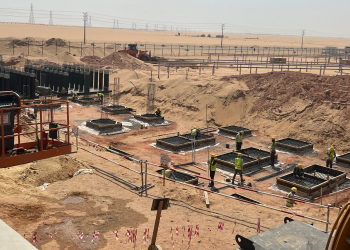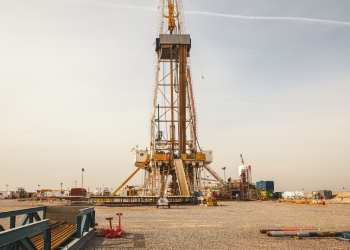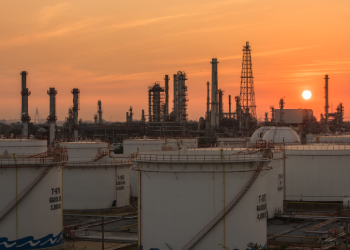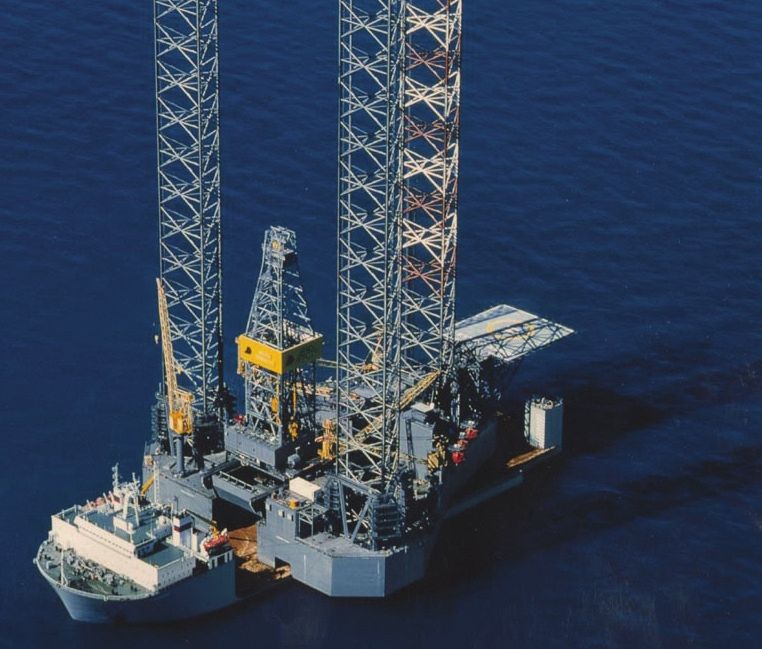China State wins Abu Dhabi photovoltaic project
9 June 2025
Beijing-based China State Construction Engineering Corporation (CSCEC) has been awarded the engineering, procurement and construction (EPC) contract for a photovoltaic (PV) solar power plant at Tawazun Industrial Park in Abu Dhabi.
The scope of work includes the design, procurement, installation, commissioning and trial operation of a PV power plant, along with a 24-month warranty period for operation and maintenance.
Once operational, the PV power station is expected to reduce carbon dioxide emissions by approximately 14,064 tonnes annually. This reduction is equivalent to alleviating the carbon footprint of over 25% of Tawazun Industrial Park.
The project client is Emerge, which is a joint venture of Abu Dhabi Future Energy Company (Masdar) and France’s EDF Group.
In January, MEED reported that Emerge had awarded CSCEC a contract to build six solar power plants in Abu Dhabi.
The EPC contract includes the design, procurement, installation, commissioning, trial operation and 24-month warranty period for operation and maintenance of six independent solar PV power stations.
Emerge focuses on developing captive or private-to-private renewable energy projects across the GCC region.
Exclusive from Meed
-
 Qatar tenders Smaisma infrastructure contract
Qatar tenders Smaisma infrastructure contract17 September 2025
-
 Dragon Oil to boost exploration and production in Egypt
Dragon Oil to boost exploration and production in Egypt17 September 2025
-
 Construction launched for final major projects of Iraq’s GGIP
Construction launched for final major projects of Iraq’s GGIP17 September 2025
-
 Saudi drilling firm raises acquisition offer for Dubai rival
Saudi drilling firm raises acquisition offer for Dubai rival16 September 2025
-
 Oman tenders Rusayl power cable project
Oman tenders Rusayl power cable project16 September 2025
All of this is only 1% of what MEED.com has to offer
Subscribe now and unlock all the 153,671 articles on MEED.com
- All the latest news, data, and market intelligence across MENA at your fingerprints
- First-hand updates and inside information on projects, clients and competitors that matter to you
- 20 years' archive of information, data, and news for you to access at your convenience
- Strategize to succeed and minimise risks with timely analysis of current and future market trends

Related Articles
-
 Qatar tenders Smaisma infrastructure contract
Qatar tenders Smaisma infrastructure contract17 September 2025

Register for MEED’s 14-day trial access
Qatar’s Public Works Authority (Ashghal) has tendered a contract inviting construction firms to bid for the remaining works on roads and infrastructure in the small seaside town of Smaisma.
The contract covers package two in the south area of Smaisma, located 52 kilometres (km) north of Hamad International airport.
The scope of work includes the completion of the remaining works and remedial works on three zones. Each zone is further divided into three sub-zones.
The scope also covers the remaining works on road C1017.
The contract duration is two years from the start of construction works.
The tender was floated on 15 September with a bid submission date of 28 October.
The latest notice follows the tendering for the construction of roads and infrastructure in Wadi Al-Banat North (Zone 70).
Market overview
After 2019, there was a consistent year-on-year decline in contract awards in Qatar’s construction and transport sectors. The total value of awards in that year was $13.5bn, but by 2023 it had fallen to just over $1.2bn.
In 2024, the value of project contract awards increased to $1.7bn, bucking the downward trend in the market in the preceding four years.
Of last year’s figure, the construction sector accounted for contract awards of over $1.2bn, while transport contract awards were about $200m.
There are strategic projects in the bidding phase in Qatar worth more than $5bn, and these are expected to provide renewed impetus to the construction and transportation market, presenting opportunities for contractors in the near term.
https://image.digitalinsightresearch.in/uploads/NewsArticle/14682452/main.jpg -
 Dragon Oil to boost exploration and production in Egypt
Dragon Oil to boost exploration and production in Egypt17 September 2025
Register for MEED’s 14-day trial access
Dubai-based Dragon Oil has signed a deal with the state-owned national oil company Egyptian General Petroleum Corporation (EGPC), agreeing to increase exploration and production activities in the Gulf of Suez.
Under the terms of the agreement, Dragon Oil will make investments worth about $30m.
This will fund activities including a programme to drill at least two new wells in the East El-Hamd area.
Abdulkarim Ahmed Al-Mazmi, the acting chief executive of Dragon Oil, said: “The signing of this agreement reaffirms Dragon Oil’s commitment to strengthening its strategic presence in the Arab Republic of Egypt and supporting EGPC’s efforts to develop energy resources in the Gulf of Suez region, in line with the company’s vision for growth and sustainability.”
Dragon Oil is wholly owned by Emirates National Oil Company, which is fully owned by the Government of Dubai.
Al-Mamzi said that the new investments are part of Dragon Oil’s broader strategy to expand in regional markets and to strengthen its position in the oil and gas sector, in line with the directions of the government of the UAE, and in particular the Government of Dubai.
The agreement was signed at the EGPC headquarters in Cairo.
https://image.digitalinsightresearch.in/uploads/NewsArticle/14680456/main.png -
 Construction launched for final major projects of Iraq’s GGIP
Construction launched for final major projects of Iraq’s GGIP17 September 2025
Register for MEED’s 14-day trial access
Officials have announced the start of construction on Iraq’s Common Seawater Supply Project (CSSP) and the full field development of the Ratawi oil field, which is also known as the Artarwi field.
The two projects are the two last major contracts of the Gas Growth Integrated Project (GGIP).
The GGIP is led by France’s TotalEnergies, which is the operator and has a 45% stake in the project.
Its partners are Iraq’s state-owned Basra Oil Company, which has a 30% stake, and QatarEnergy, which has a 25% stake.
An event in Baghdad to mark the launch of the two projects was attended by senior officials including Patrick Pouyanne, the chairman and chief executive of TotalEnergies; and Saad Sherida Al-Kaabi, who is Qatar’s Minister of State for Energy Affairs, as well as the president and chief executive of QatarEnergy.
In a statement, TotalEnergies said: “All four parts (natural gas, solar, oil, water) of the GGIP are now in the execution phase.”
The CSSP will be built on Iraq's coast, near the town of Um Qasr. It will process and transport 5 million barrels a day (b/d) of seawater to the main oil fields in southern Iraq.
Treated seawater will be substituted for the freshwater currently taken from the Tigris, Euphrates and aquifers to maintain pressure in the oil wells.
The project is expected to help alleviate water stress in the region and free up to 250,000 cubic metres of freshwater a day for irrigation and local agriculture needs, according to TotalEnergies.
The Ratawi redevelopment was launched in September 2023. Phase one aims to increase production to 120,000 b/d of oil and is expected to come on stream by early 2026.
The launch of phase two, the full field development, will enable production to be increased to 210,000 b/d starting in 2028, with no routine flaring, according to TotalEnergies.
In a statement, it said that all 160,000 cubic feet a day (cf/d) of associated gas produced will be fully processed by the 300,000 cf/d Gas Midstream Project (GMP), the construction of which began in early 2025.
The GMP, which will also treat previously flared gas from two other fields in southern Iraq, will deliver processed gas into the national grid, where it will fuel power plants with a production capacity of approximately 1.5GW, providing electricity to 1.5 million Iraqi households.
An early production facility to process 50,000 cf/d of associated gas will start in early 2026, together with the Ratawi phase one oil production.
Pouyanne said: “We are delighted today to award the two final contracts of the GGIP, in particular the seawater treatment plant, which has been long awaited by the oil industry in Iraq.
“In less than two years since the GGIP effective date in August 2023, TotalEnergies and its partners have fully executed their commitment towards the people of Iraq and launched all projects included in the multi-energy GGIP project, the best showcase of TotalEnergies' transition strategy.
“All these projects will bring a significant contribution to the Iraq economy and employ during the construction phase 7,000 Iraqi nationals.
“Furthermore, I am proud to confirm that the first phase of the associated gas, oil and solar projects will start up as soon as early 2026.”
Turkiye’s Enka has signed a contract to develop a central processing facility at the Ratawi oil field as part of the second phase of the field’s development.
https://image.digitalinsightresearch.in/uploads/NewsArticle/14680455/main.png -
 Saudi drilling firm raises acquisition offer for Dubai rival
Saudi drilling firm raises acquisition offer for Dubai rival16 September 2025
Register for MEED’s 14-day trial access
Saudi Arabia-based ADES International Holding has increased its offer to buy Dubai-based, Oslo-listed rival Shelf Drilling to 18.50 Norwegian Krone ($1.88) per share, representing a 6% increase in the acquisition’s enterprise value.
The offer was revised from an earlier deal of $1.42 per share or a total of $379.33m.
ADES International Holding, a subsidiary of ADES Holding Company, signed a transaction agreement to acquire all issued and outstanding shares of Shelf Drilling through a cash merger, with ADES International Cayman (BidCo) also participating in the proposed merger.
According to a joint statement, irrevocable commitments have now been provided by additional shareholders, including China Merchants, Anchorage Capital Group and Magallanes Value Investors, which, combined with ADES’ 17.9% stake in Shelf Drilling, represent 53.4% of the outstanding shares in the company.
ADES International Holding raised its offer for Shelf Drilling after reassessing the company’s current market performance and revising its estimated annual cost synergies upwards by $10m, bringing the total to $50m-$60m.
All other terms of the merger remain unchanged, along with the transaction timetable, with closing expected to occur in the last quarter of the year.
Shelf Drilling is incorporated under the laws of the Cayman Islands, with its corporate headquarters in Dubai.
In April this year, ADES International Holding secured a 10-year extension for one of its standard offshore jack-up rigs from Saudi Aramco, valued at approximately $290m.
The contract for the offshore jack-up marks the re-entry of ADES International Holding into the Saudi offshore oil and gas market. The rig was among six jack-ups whose charters were suspended by Aramco last April.
ADES International Holding has secured deployments for three of those jack-ups in Qatar, Thailand and Egypt, while the fourth was recently redeployed to Thailand.
ADES International Holding also said it has increased its footprint since the start of 2025 by securing an offshore drilling job off the coast of Nigeria, marking its entry into West Africa.
https://image.digitalinsightresearch.in/uploads/NewsArticle/14676037/main0952.jpg -
 Oman tenders Rusayl power cable project
Oman tenders Rusayl power cable project16 September 2025
State-owned Oman Electricity Transmission Company (OETC) has opened bidding for the construction of the cable connection from the Rusayl power plant (GT-5 & GT-6) to the Rusayl industrial grid station.
The tender is open to local companies with tender board registration and valid commercial registration, the authority said.
Bids must be submitted electronically, with hard copies of the bid bond and other documents delivered to OETC’s head office in Muscat.
The last date to obtain documents is 23 September, with bids due by 7 October.
The new cable tender forms part of OETC’s strategy to expand transmission in line with industrial growth. The Rusayl power plant, located near Muscat, is one of Oman’s key natural gas-fired generation facilities and supplies electricity to the Main Interconnected System (MIS), the country’s largest grid.
The adjoining Rusayl Industrial City is a major manufacturing hub hosting companies across chemicals, textiles, electrical materials and food production, which has driven steady growth in power demand.
OETC is undertaking several major transmission projects to reinforce the MIS. These include the construction of new 132kV grid stations, network reinforcements around Muscat and the Masirah Island interconnection, which is valued at about RO72m ($187m).
Local firm Bahwan Engineering won the main contract for this project and started construction earlier this year.
https://image.digitalinsightresearch.in/uploads/NewsArticle/14675720/main.jpg




